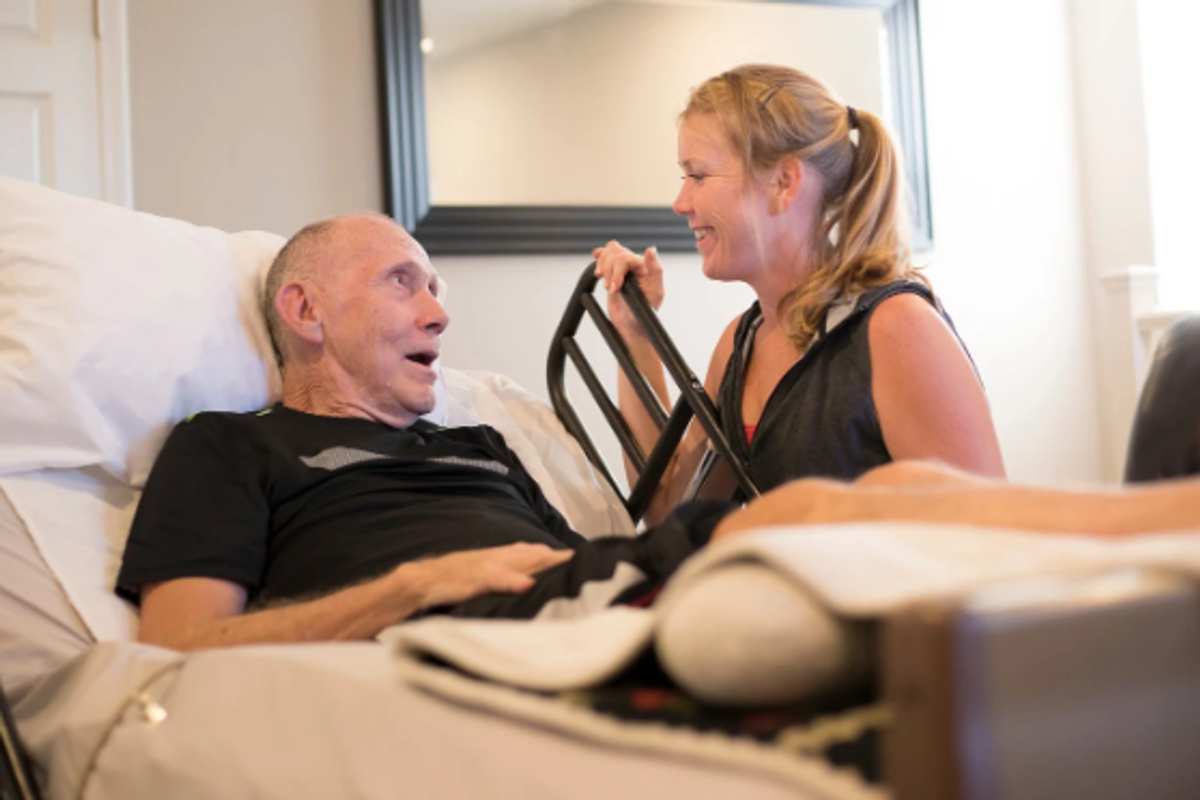Hospice doctor for the rich and poor shares the most 'powerful' way money can create happiness
It's something you can do on any budget.
A man in hospice care.
Does money really buy happiness? Are Elon Musk or Jeff Bezos happier than a school teacher living in Arkansas or a fireman in Nevada? Studies show that more money can make people incrementally happier, but Dr. Jordan Grumet, hospice doctor and author of The Purpose Code, says that the important thing is knowing how to spend it.
Grumet has a great perspective on money and happiness because he has seen people from every background in their final days when they get honest about their regrets, and he doesn’t see much of a difference in how happy they are. “I take care of people at the end of life, and I’ve seen people from every economic class,” Grumet tells CNBC Make It. “I’ll tell you, money doesn’t seem to correlate. It really doesn’t. I’ve seen really, really happy poor people, and I’ve seen really, really miserable rich people.”
The key indicator of whether someone has led a good life at the end is whether they have any regrets. “The happiest people I see are the ones who don’t have regrets, and the ones who don’t have regrets put the energy, courage, and time into becoming who they wanted to be, whether they spent money on it or not,” Grumet says.

Spend your money on 'becoming' your true self
That’s why Grumet believes that we should be careful to spend our money on things that help us grow as people. Buying a new sports car or an expensive vacation will bring you temporary happiness, but the kind that lasts comes from what Grumet calls “becoming.”
“When you direct resources toward becoming a fuller, more intentional version of yourself, you’re not just chasing pleasure—you’re investing in growth,” he writes in Psychology Today. “If you love writing, you might hire a coach. If you’re adventurous, maybe it’s a trip to Machu Picchu. When spending fuels purpose and passions, it naturally draws others to you. And as the Harvard study reminds us, it’s those human connections that form the foundation of happiness.”
The Harvard study Grumet mentions is the Harvard Adult Development Study, which studied participants for over 80 years. The big takeaway was that personal connections are the key to true fulfillment. “Good relationships keep us happier, healthier, and help us live longer,” Robert Waldinger, author of The Good Life: Lessons from the World's Longest Scientific Study of Happiness, writes.

Pursuing your potential leads to meaningful connections
Investing in exploring your passions will help you grow as a person and form meaningful connections with others who share your interests. Whether that means making new friends at the runners group or connecting with other writers in your Introduction to the Novel class. Spending money on a new F350 or on jewelry probably won’t do that.
Further, when we invest our resources in following our passions and personal development, it will likely lead to fewer regrets in our final days. The greatest regret people have while in hospice is that they wish they had lived a life "true to myself, not the life others expected of me.” By pursuing your passions, you’ll know in your heart that you pushed yourself to live as authentically as possible.
“The data are clear: earning more money does not guarantee happiness,” Grumet writes. “Spending on things and even experiences can offer momentary boosts, but their impact tends to fade. The most enduring form of spending is on becoming—on growth, purpose, and passions that make you a better version of yourself.”

